Shrimps are known for being teeny-tiny tank cleaners, and as such, they’re often housed alongside other fish in community tanks as part of a cleaning crew, and in small species-only tanks.
They’re adorable, yet sensitive creatures, requiring specific substrates, water conditions, and filters in order to live a long and happy life. That said, creating a shrimp tank isn’t a difficult process, and it can be very enjoyable even for those who are less experienced in the aquarium hobby.
Both Ghost Shrimp and Cherry Shrimp are some of the more popular species, with both of them being very active and playful creatures.
And, although some shrimp keepers are happy to have their shrimp live in a highly planted tank without a filter, it’s a common misunderstanding that just because shrimp are cleaner animals they don’t need a filter at all, so read on to find out why they need one, and whether or not you should get one for your tank.
Do Shrimp Clean tanks?
When it comes to choosing a new aquatic pet, crustaceans are commonly overlooked in favor of colorful, flashy fish.
The cleaner shrimp family is a great choice for many aquariums, however, as they’re a very natural fit for many aquatic biomes and can be a great benefit for both the inhabitants of the tank and their owner, who inevitably has to do most of the cleaning.
As might be obvious by the name, the family of cleaner shrimp spends most of their time cleaning up algae and debris from their environment, cleaning the gravel, tank, décor, and rocks. Surprisingly, some species also clean your fish! They’re such diligent, hard-working little guys!
Species that clean your fish can help them in the removal of parasites, which not only aids your fish but provides your shrimp with a tasty little treat too!
Which Shrimp Clean Tanks?
There are various types of shrimp known for their ability to clean their environment. Here we have listed a few types of cleaner shrimp so you can learn a little more about which may be the right type for you.
Banded Cleaner Shrimp
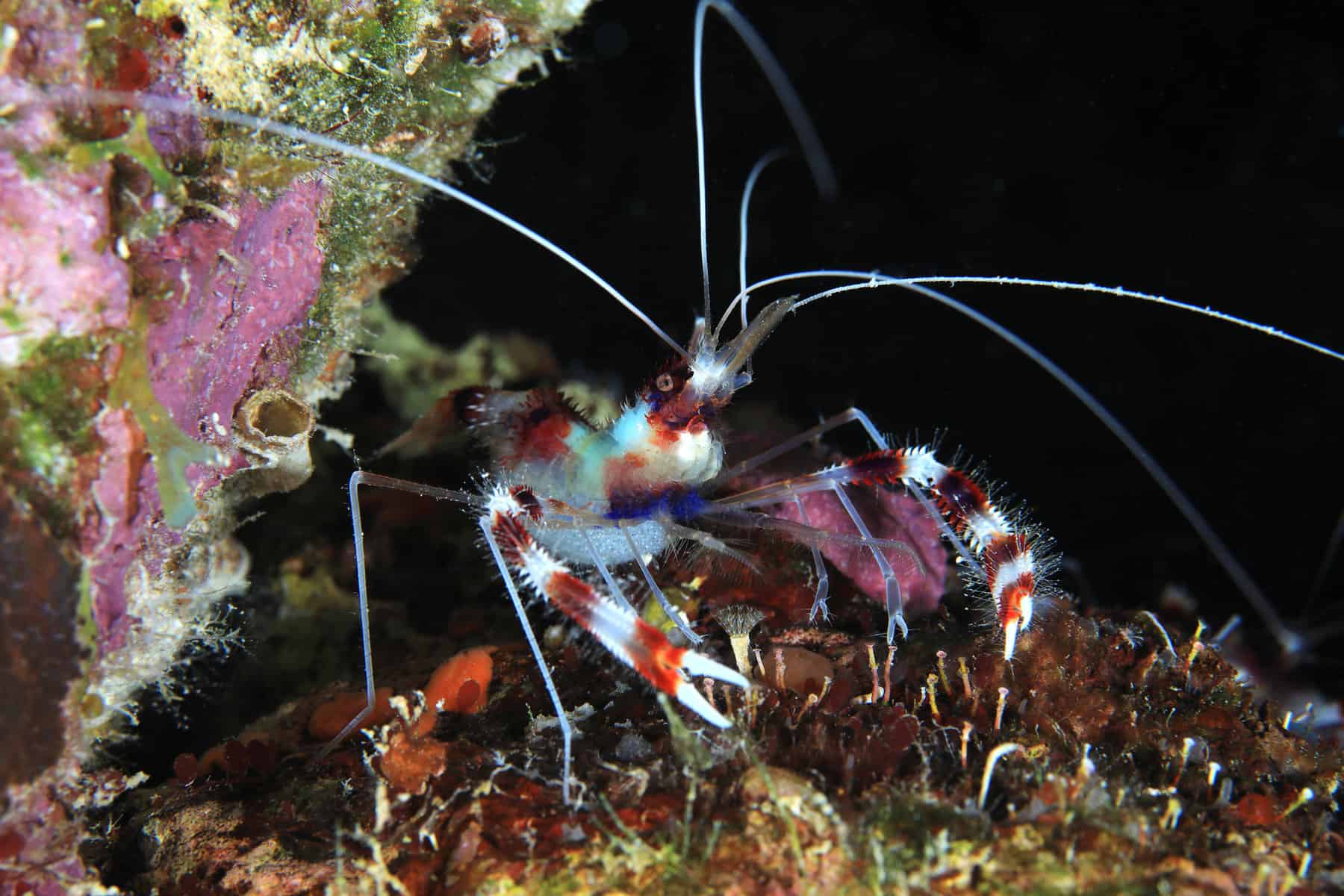
Also known as the Coral Shrimp, these little guys should only be housed alone, or as a mated pair.
They’re known for their long, banded third pair of arms, which can certainly help speed up the cleaning process. These fish are not only unique as a species, but they’re also unique in their own right – they’re actually even able to recognize and differentiate between different individual shrimp.
The Banded Cleaner Shrimp are an adorable addition to any tank, due to their tendency to wave their long antennae at passing fish. In the fish world, they’re that one guy who greets everyone that walks past him with a cheery smile and heartfelt good morning.
Red Crystal Shrimp
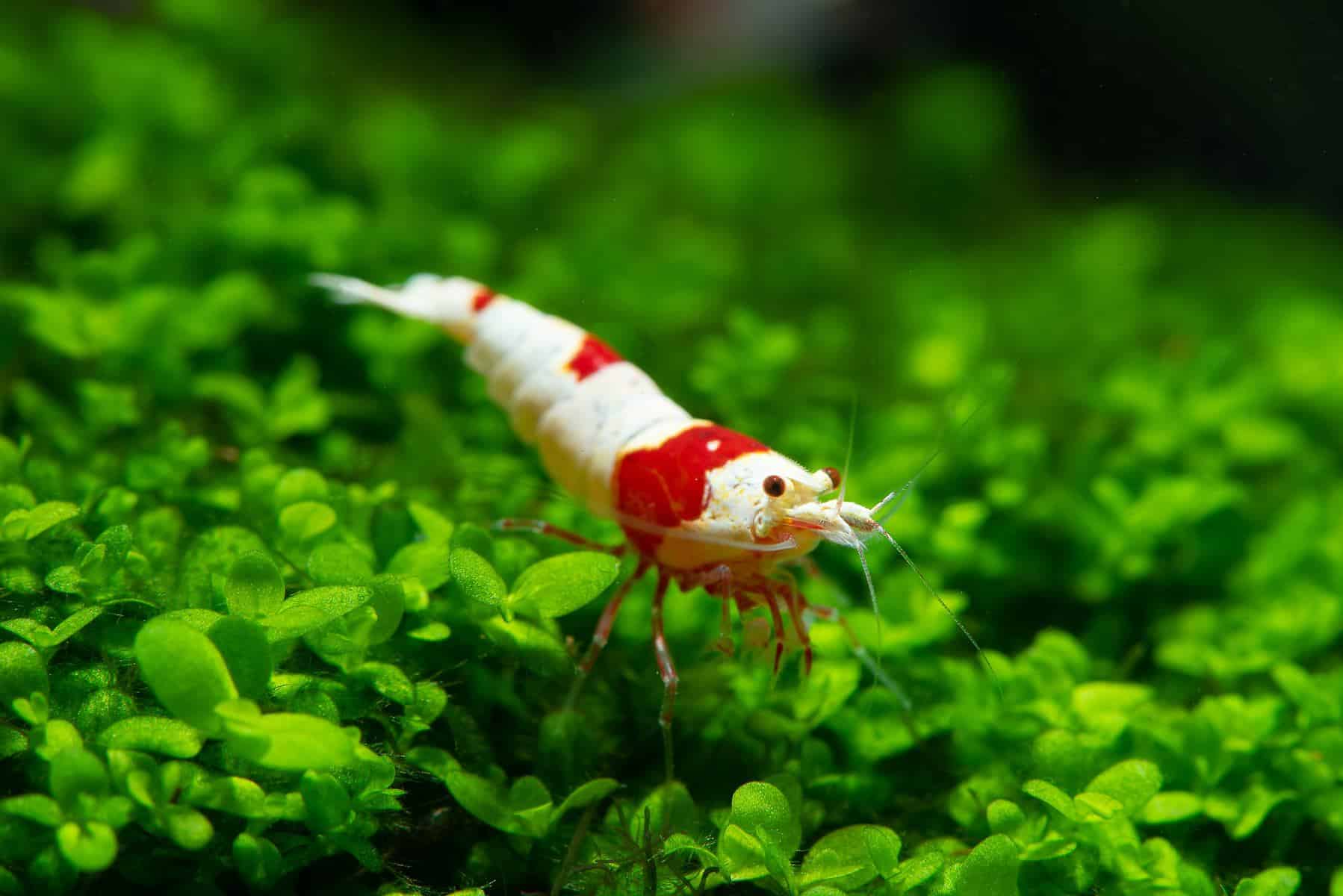
The Red Crystal Shrimp, also known as the Caridina, are famous for their bright red and white banded pattern, with those shrimp with very bright white bands going on the market for a higher price than the typical Red Crystal.
Some Red Crystals are born without the color mutation, and these are known as Bee Shrimp. These exhibit contrasting bands in a variation of black, white, and brown, as opposed to a red or white color.
Although an excellent addition to many freshwater tanks, you must take into consideration their preference for slightly acidic waters (6.0 – 7.6 pH) when choosing which fish species to house with them.
Japonica Amano Shrimp
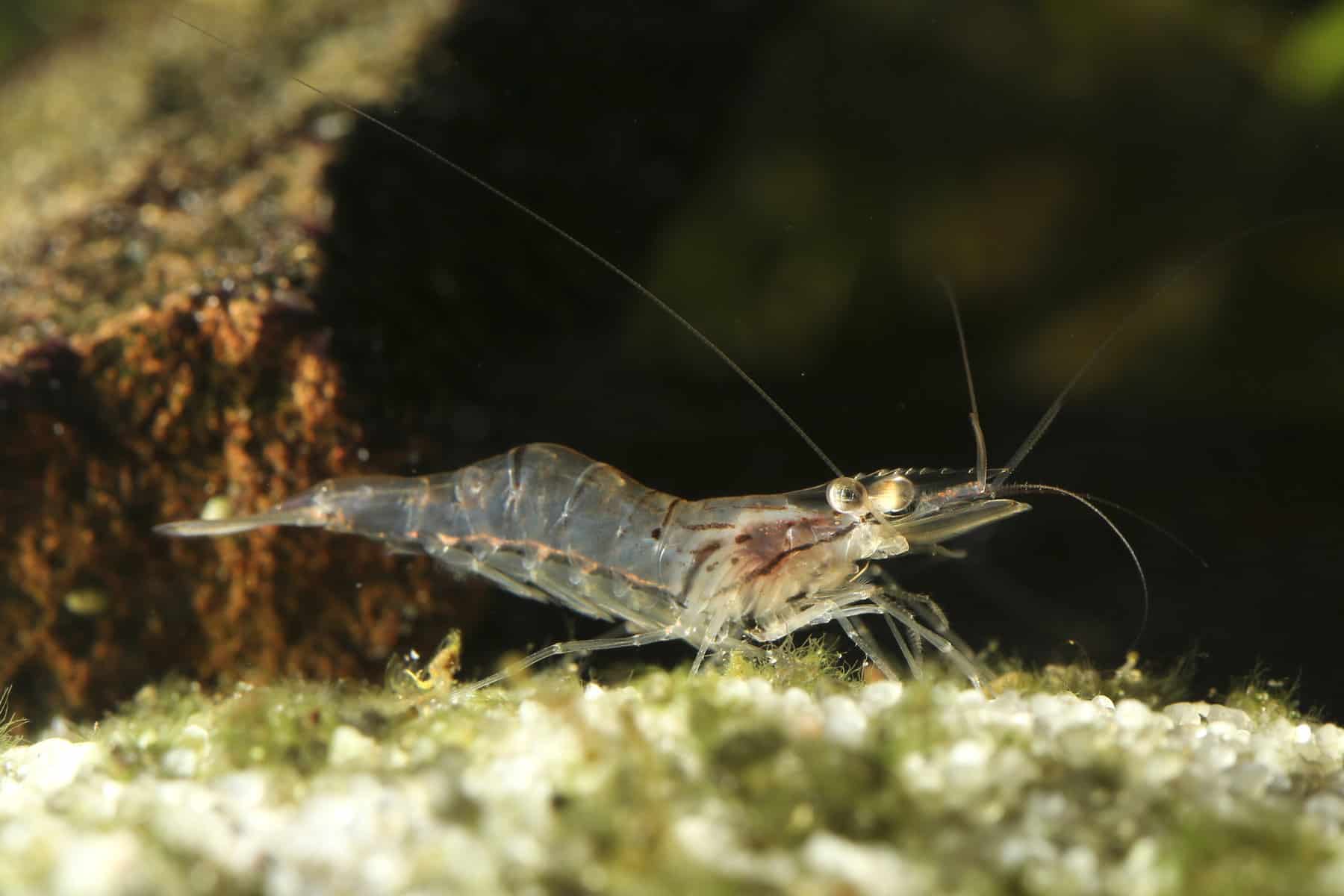
The Amano Shrimp is an opaque brown in color, with a light tan stripe running along the back of its body. It’s also common for shrimp of this species to have some horizontal lines running down the sides of their bodies.
These shrimp enjoy water that has a pH of 6.0-7.5, similar to the Red Crystal Shrimp, so you should also make a note of this when choosing suitable tankmates.
A multitude of plants, a warm water temperature, and plenty of hiding spaces make for a perfect environment for this shrimp, which can live up to as long as two or three years and can grow up to about 2 inches in length given the correct care.
They’re a very peaceful and easy-to-keep species, but can be difficult to breed in a home aquarium.
Skunk Cleaner Shrimp

The Skunk Cleaner Shrimp, also known as the Lysmata Amboinensis, is a larger saltwater species of Cleaner Shrimp, which can grow up to 2 inches / 6cm in length. Like a Skunk, they have a defining white line running along the side of their body.
When first introduced to their saltwater tank, they begin to molt, shedding their exoskeletons and growing much larger.
The Skunk Cleaner is another type that cleans not only the items within the tank but also your fish. They even set up specialist cleaning stations (a bit like a car wash for fish!).
Blood Red Fire Shrimp
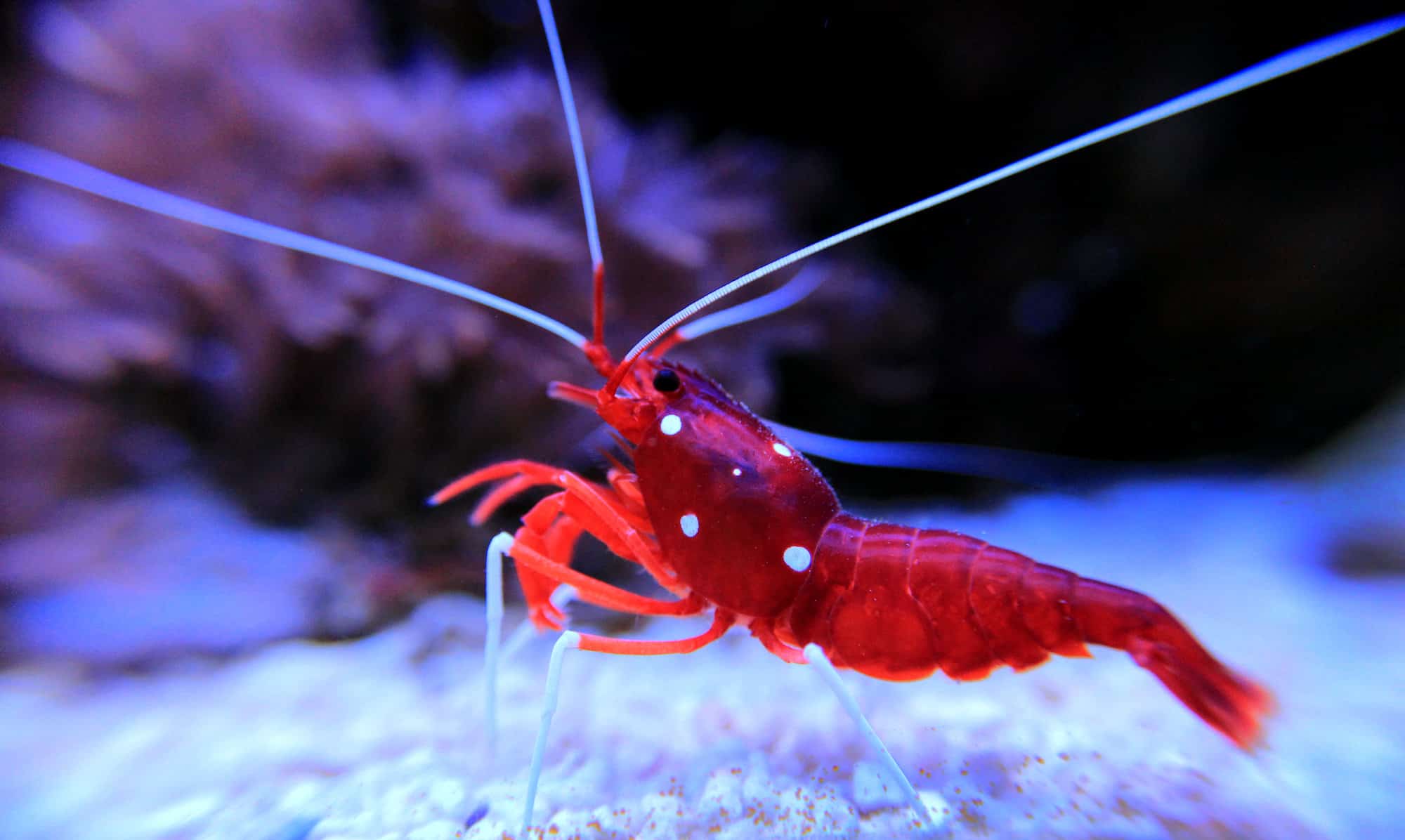
The Blood Red Fire Shrimp, also known as the Blood Shrimp, Fire Shrimp, Scarlet Cleaner Shrimp, or the Lysmata Sebelius, is a gorgeous deep red color, with white spots and long white antennae, which pokes out from its hiding spots, making it fun to try spotting when it’s hiding amongst the décor of the tank.
Yep, they really like hiding! They’re a pretty shy species, so you should be sure to provide them with plenty of places to hide away, such as caves, rocks, and various ornaments and items of décor that can give them some shelter.
They’re a great cleaner fish, not only keeping the tank and décor shiny and clean, but your fish that inhabit it too!
Ghost Shrimp
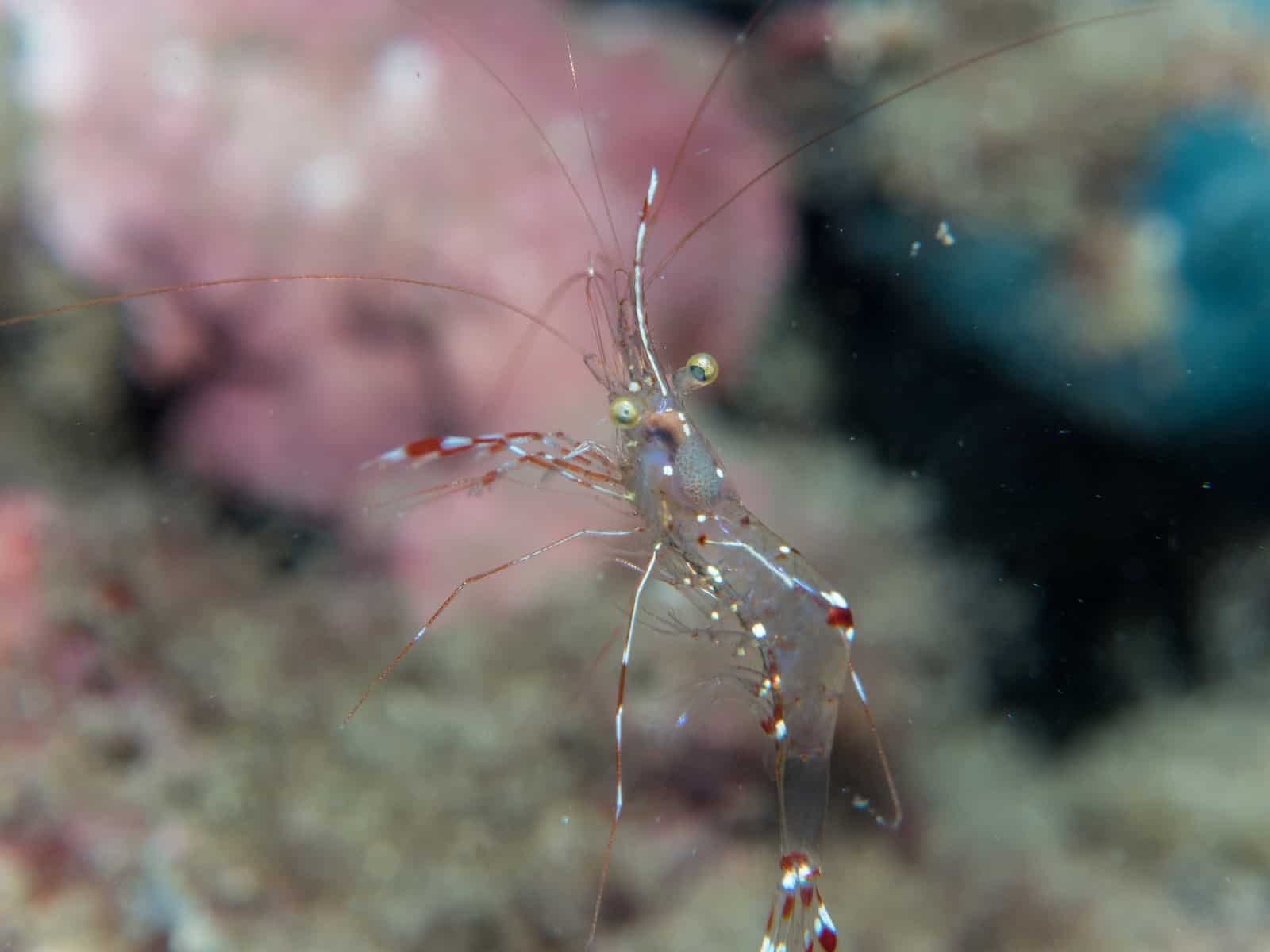
A small and friendly species, the Ghost Shrimp is one of the most popular species amongst shrimp keepers, and they’re well known and loved by the wider aquarium lovers community too!
They make for an excellent addition to a community tank and can happily be kept alongside other Ghost Shrimp. This can, however, lead to breeding, so if this is something you want to avoid happening, you may want to consider a different species instead.
Not only are they great at cleaning algae, but Ghost Shrimp are also excellent scavengers, eating up any leftover food and scraps they come across on the floor of the tank.
This is another way of helping to keep the tank clean and can prevent this debris from decomposing, which is a common cause of heightened ammonia levels in the tank.
Ghost Shrimp are known for their translucent bodies – it’s where they get their name from, and it’s also a feature that makes them an interesting and unique specimen in any home aquarium. They’re also super easy to keep, and with good care, can grow up to 2 inches long.
Peppermint Shrimp
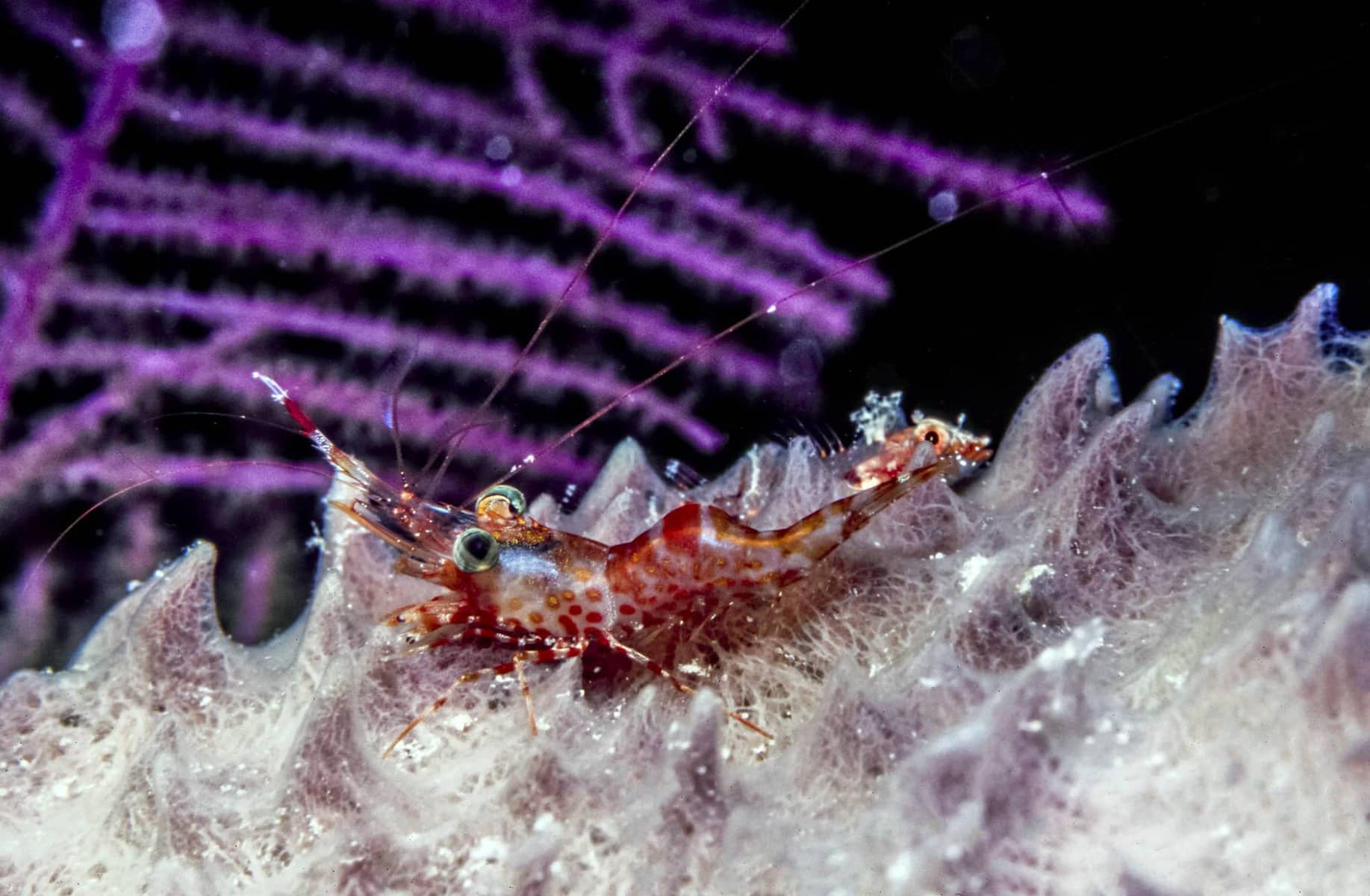
Peppermint Shrimp, also known as Caribbean Cleaner Shrimp, Veined Cleaner Shrimp, or Lysmata Wurdemanni, prefer to eat organic matter they find in their tank to parasites, meaning that they’re not technically defined as a ‘Cleaner Shrimp’.
That said, their enthusiasm for organic matter helps keep the tank clean of algae and prevents a buildup of ammonia levels.
Red Cherry Shrimp
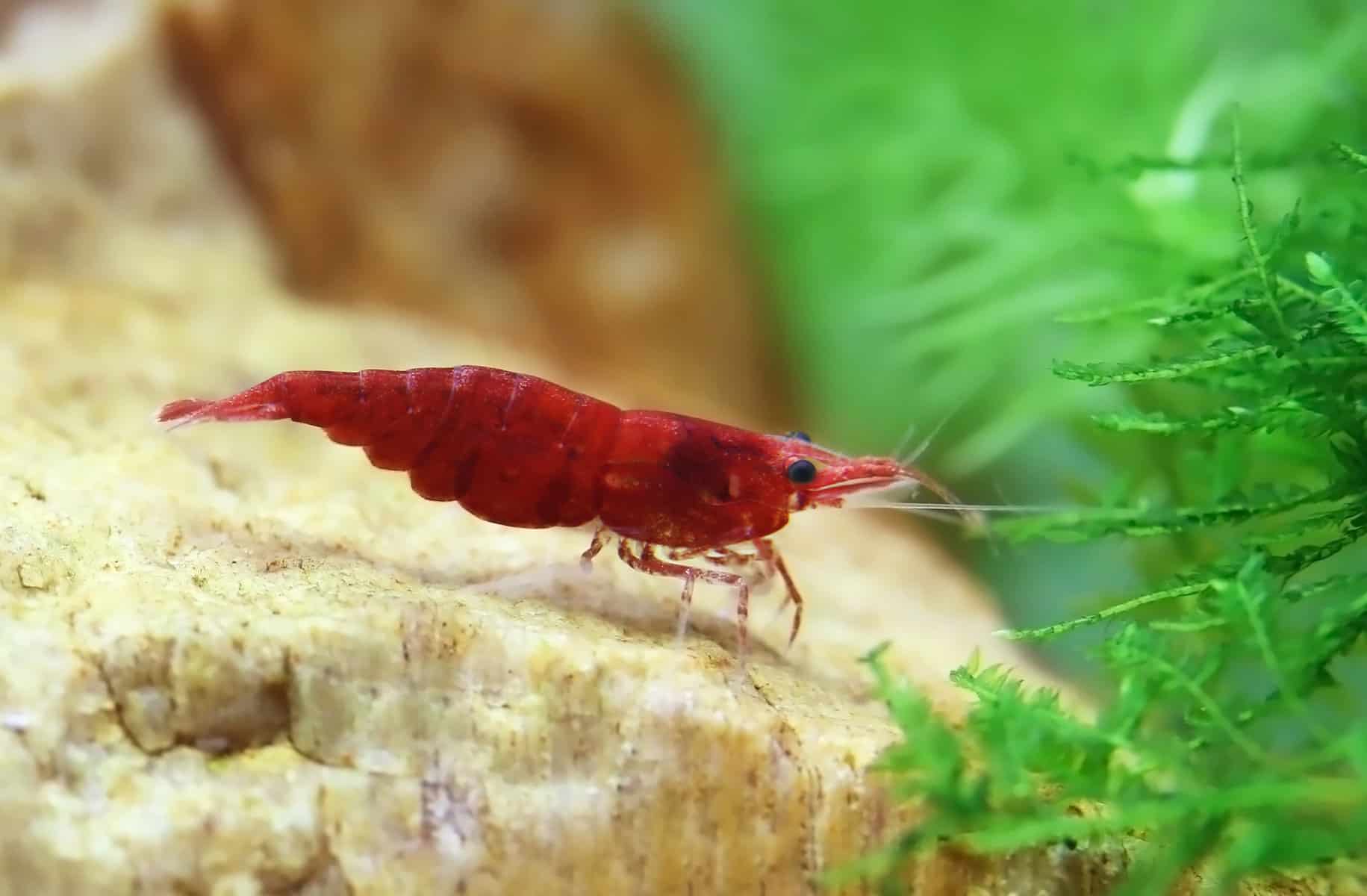
The Red Cherry Shrimp is a species you will certainly have heard of. These are one of the most popular shrimp species in the aquarium hobby, due to their beautiful bright red coloration and their ability to breed easily.
You’ll pretty much just need a male and a female in the same tank, and you’ll soon see babies popping up!
They’re also very peaceful, making them ideal for community tanks, and relatively easy to care for, making Red Cherry Shrimp ideal for first-time shrimp keepers.
Red Cherry Shrimp are excellent scavengers and prefer to live in heavily planted tanks.
Grass Shrimp
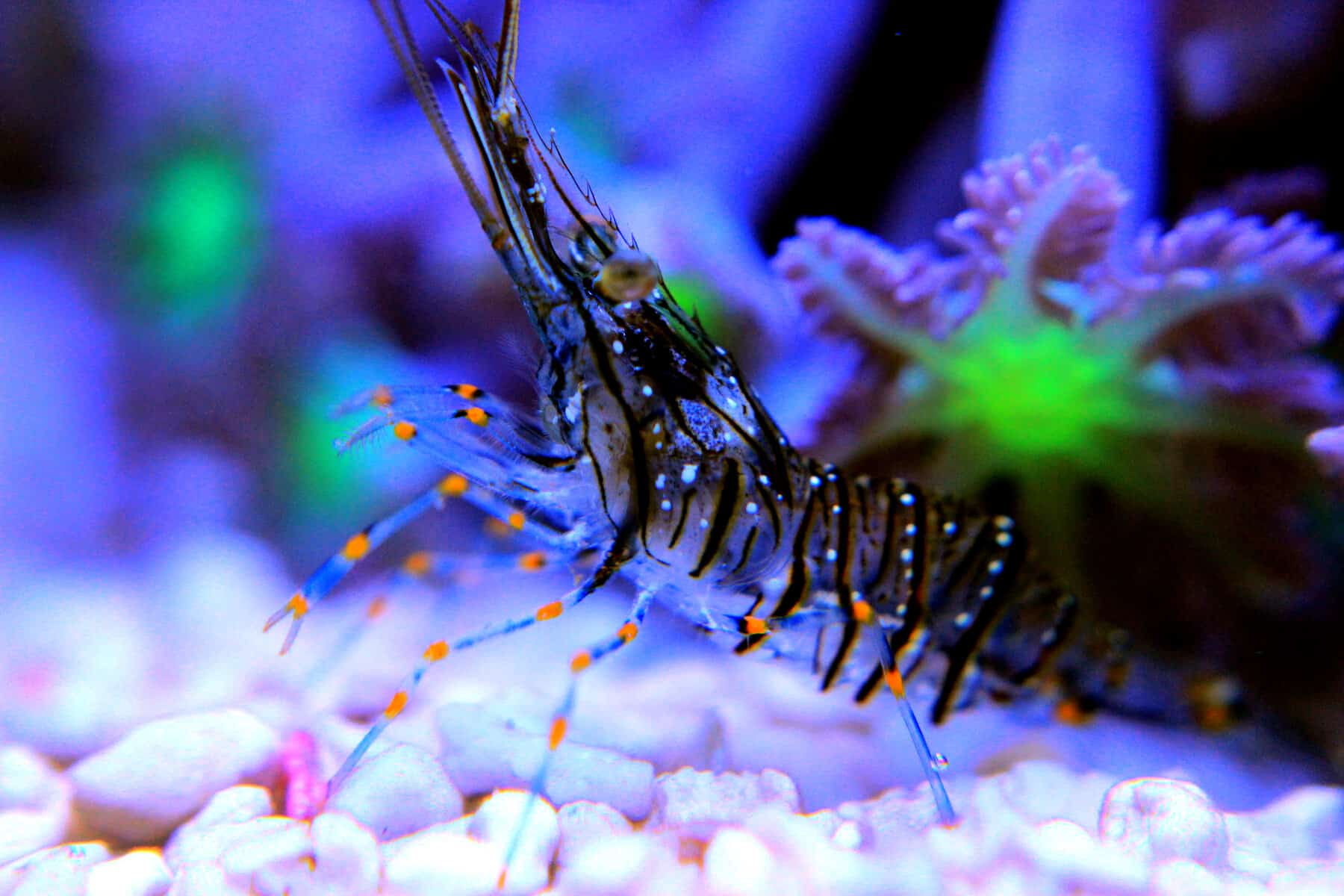
Grass Shrimp are another simple-to-keep and simple-to-breed species that are great at cleaning, they’ll eat leftovers, debris, and algae and even clean your filter up!
They’re a relatively easy-to-care-for type of saltwater shrimp, that thrive in warm waters with a pH level between 6.5 and 8.0. Therefore, do thorough research as to which fish can tolerate the same conditions before setting up a community tank with your Grass Shrimp.
Hiding spots are essential, so you’ll want to provide them with rocks, ornaments, plants, and driftwood so they have ample space to retreat to in order to feel safe.
Bumblebee Shrimp
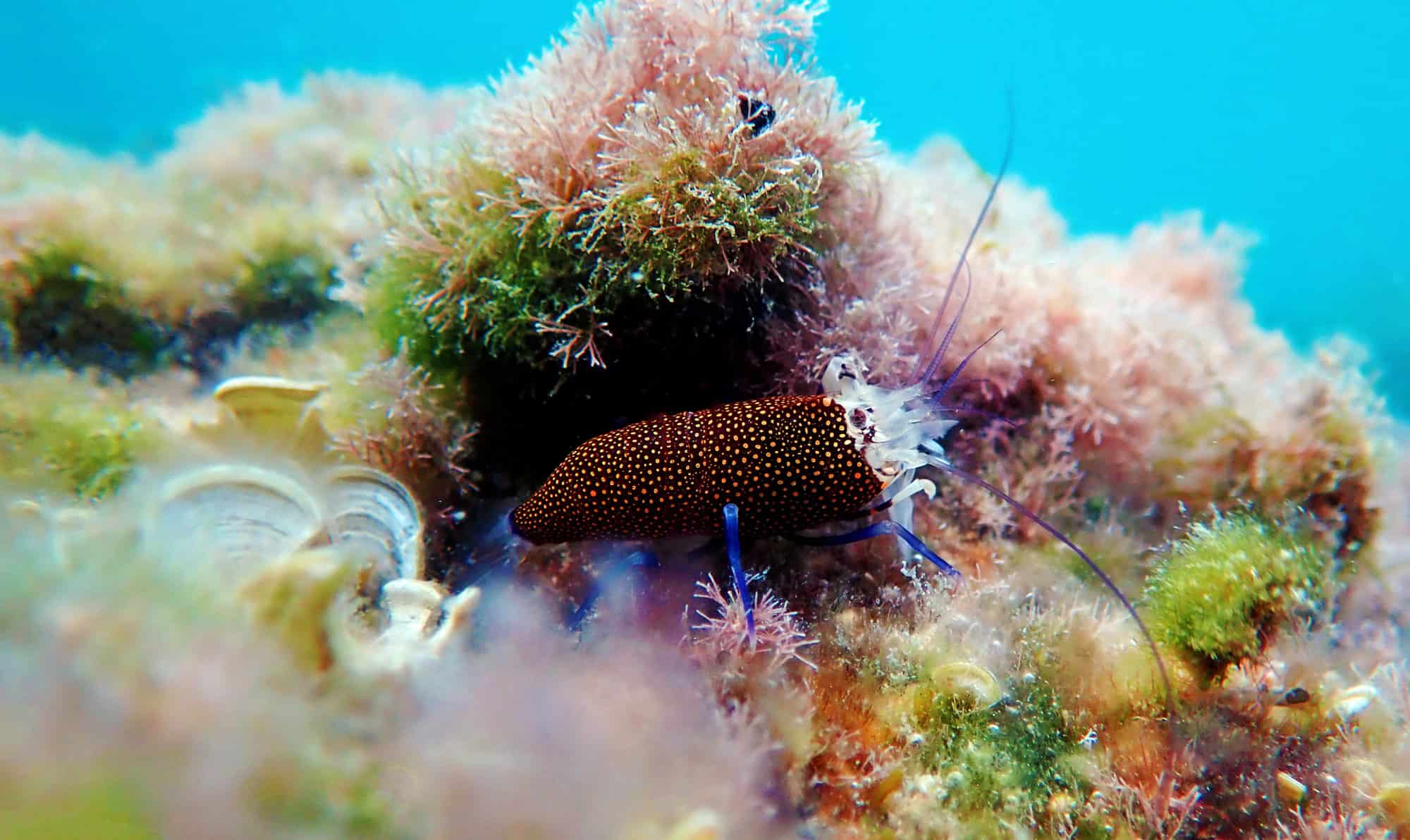
A smaller shrimp, the Bumblebee grows up to a maximum of 1.5 inches, and so can be kept in community tanks with small fish, who will not see them as prey. That said, as with many shrimp types, it can be difficult to choose which fish make suitable tankmates due to their preferences for a pH range of 6.0-7.2 and warm, soft water.
Their fussiness in water parameters means that they can be quite a challenging species to care for, so they are not recommended as a beginner for shrimp keepers.
They’re a species that you’ll certainly want to work your way up to own, however, as they’re truly beautiful fish. Named after the bumblebee, they’re striped shrimp and exist in both black and white and white and red color forms.
Do Shrimps Need a Filter?
In short, yes. All shrimp need a filter. In some cases, they’re able to be kept without one in heavily planted tanks, however, the benefits of having a filter mean it is far more preferable than not having one.
A filtration system in the tank is highly beneficial, as it aids in removing waste, debris, and chemicals from the water, making it easier and safer for your beloved shrimp to breathe.
Even though many species of shrimp are able to clean up the tank themselves, a filter is extremely important in any aquarium in order to ensure optimum cleanliness in the water itself, not just by preventing a build-up of algae.
For smaller, shrimp-only tanks, it’s a good idea to use an internal sponge filter, as these do not generate a strong flow or risk any of the shrimp getting accidentally sucked up into the mechanism.
Do I Need To Clean the Shrimp Water Tank Even With a Filter?
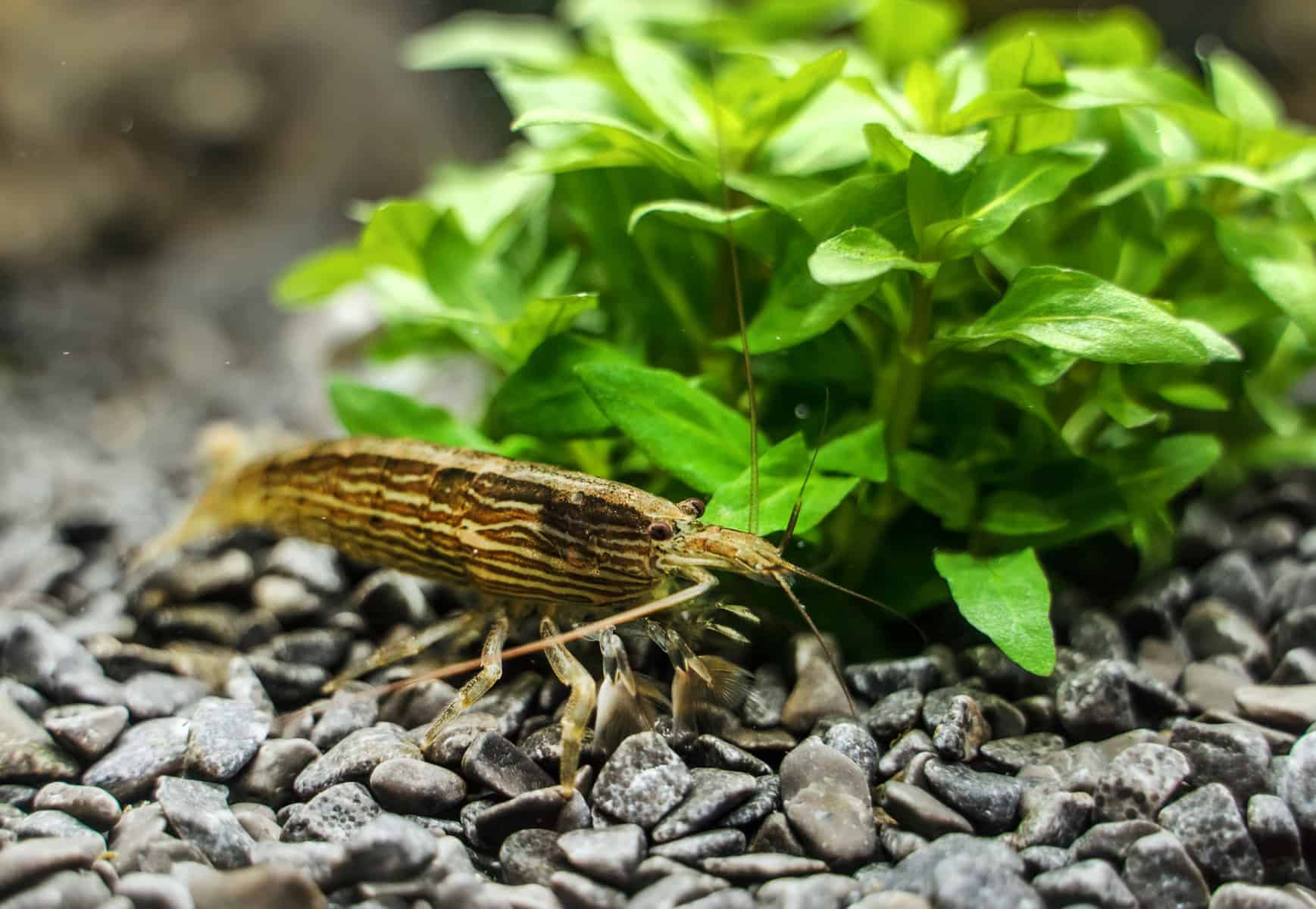
If you’re keeping just shrimp alone, and have a filtration system in place, it’s a good idea to clean it occasionally, but you wouldn’t need to do it as often as you would a community tank.
Some shrimp keepers actually prefer to just keep their environment natural, and, as water changes are generally discouraged for shrimp-only tanks, they top up the water on occasion and leave it at that.
In short, it depends on your setup as to how much you’ll need to help your shrimp out with the cleaning, but generally, ensuring that there’s no excess build-up of dirt, algae, or debris, and thoroughly cleaning your filtration system as recommended should suffice.
If your shrimp are housed as part of a community tank, you should clean this as you would without the shrimp there, they’re a great help and will make your job a lot easier, but you shouldn’t rely on just the shrimp to keep the environment within your tank healthy.
Will Ghost Shrimp Also Need a Filter?
Ghost Shrimp, just like many other shrimp that are great at cleaning, will do an excellent job at keeping the tank clean.
But as mentioned before, in order to keep the conditions of the water healthy, a filter (in particular a sponge filter) is strongly recommended.
What Are the Benefits of Having a Filter for My Shrimp?
Encourages Growth and Reproduction
Having a filter set up in your shrimp tank ensures that the water is kept clean and in excellent condition. If these high-quality water conditions were not maintained, they could very quickly begin to reduce the rate of growth in your fish, cause premature death, and lead to higher rates of premature death in any offspring your shrimp may produce.
Whilst some species of shrimp can live to the age of two or three years, Ghost Shrimp in particular benefit from this, due to their notoriously short lifespans. Their lifespans mean that they very quickly grow into adults, and poor water quality can prevent the shrimp from reaching adulthood.
Aids Molting
Many types of shrimp molt, shedding their shells/exoskeletons and growing a little more. When the water is not clean enough, however, this exoskeleton is instead absorbed, which can cause complications in the production of a new shell, and can interfere with the next molting cycle.
Reduces the Frequency of Water Changes
This one is beneficial to both you and the shrimp. Whilst it is less work for you, it’s also much easier on the shrimp.
Some species, such as the Ghost Shrimp, can be very sensitive to water parameters, as they use the water to help develop new exoskeletons when they molt.
During this process, they absorb the water in their surroundings, including all of its contents, good or bad. This means that if your water contains toxic levels of chemicals, these too will be absorbed by your shrimp.
If the water in your tank begins to appear cloudy, green, or dirty, it’s a good indication that it’s time to change the water, and this is far more frequent in tanks without a filter.
A filter is recommended to prevent too many water changes, as when it comes to shrimp, doing water changes too frequently can put it at risk of osmotic shock, which can be fatal.
Lowers Stress Levels
Shrimp are at their happiest in clean water, which is something to keep in mind when deciding whether or not to get a filter for your tank, as when the water is dirty your shrimp can become stressed out very quickly.
These increased stress levels can be because of a huge handful of reasons, including issues with molting, a lack of oxygen in the water making it difficult for your shrimp to breathe, or even the buildup of harmful chemicals and waste.
What if I Don’t Use a Filter for My Shrimp?
Ammonia Burns
Ammonia burns are caused by high levels of ammonia, which results from a buildup of the waste your fish and other tank dwellers produce. Without the use of a filter, ammonia builds up much faster, which increases the risk of your shrimp developing ammonia burns.
These burns appear as bright orange / reddish patches of skin, and, in shrimp, it can also affect their breathing as it begins to affect their gills very early on. These burns are incredibly painful for your pets, be they shrimp or fish, and they’re usually very easy to spot.
Your shrimp will not only have burns evident on their skin, but once it affects their gills, this can present as rapid or heavy breathing and lack of energy.
Lack of Oxygen
With a decline in the quality of your tank’s water, the oxygen levels also decrease, which can make it difficult for any inhabitants of your tank to breathe. Without a filter, the oxygen levels in the water drop at a much faster rate than in tanks with a filter.
Death
Both ammonia burns and a lack of oxygen are issues that can result in death if not treated and resolved immediately.
A lack of filter in the tank, sadly, increases the likelihood of your shrimp dying from one of the aforementioned ailments.
Conclusion
In short, shrimp are beautiful, playful, and lovely creatures to keep, but despite their amazing ability to keep their tank sparkling and clean, this doesn’t ensure that it’s completely clean, and a safe environment for them to live in.
To make sure your shrimp are well-cared for and at their happiest, be sure to get them a filter, it makes life much easier – for both you and your pets!


